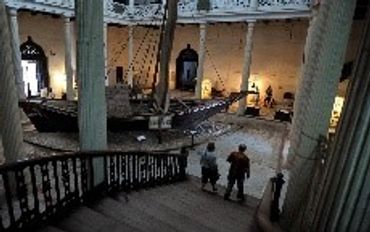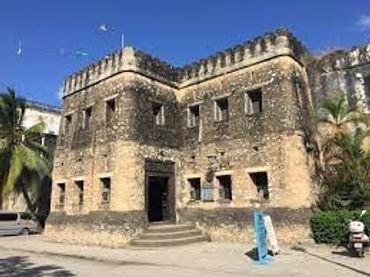Who Are We? - We are “Your” Chaperone, Guide and Watcher Over!
Tantalising Tanzania -Trips by TigerPaw Journeys Led|Curated
Tanzania is a unique African country which has had ancient peoples from the Sudan populating it, along with Arab migration, Indian traders following their spice trade settling here, and German and British rule, up until its status as a modern republic. Besides its cultural potpourri, some of Tanzania’s wilderness biospheres are unique.
Bordering Kenya and Uganda to the north; Rwanda, Burundi, and the Democratic Republic of the Congo to the west; and Zambia, Malawi & Mozambique to the south, Tanzania is located on the eastern coast of Africa and has an Indian Ocean coastline approximately 800 kilometres (500 mi) long. It is the site of Africa’s highest and lowest points: Mount Kilimanjaro, at 5,892 metres (19,331 ft) above sea level, and the floor of Lake Tanganyika, at 352 metres (1,155 ft) below sea level, respectively. Mountainous and densely forested in the northeast, where Mount Kilimanjaro is located, three of Africa’s Great Lakes are partly within Tanzania. To the north and west lie Lake Victoria, Africa’s largest lake, and Lake Tanganyika, the continent’s deepest lake, known for its unique species of fish. To the southwest lies Lake Nyasa. Central Tanzania is a large plateau, with plains and arable land. The eastern shore is hot and humid, with the Zanzibar Archipelago just offshore.

The Kalambo water falls in the south-western region of Rukwa are the second highest uninterrupted fall in Africa and are located near the southeastern shore of Lake Tanganyika on the border with Zambia. The Menai Bay Conservation Area is Zanzibar’s largest marine protected area. Thirty eight percent of Tanzania’s land area is set aside in protected areas for conservation . Tanzania is one of the few countries that has not seen inter-tribal warfare and our custom trips can include meetings with tribal communities.
We offer customized trips in Tanzania through a combination of various camps and lodges so ask for a custom trip today! We will create a great and viable package with whatever is on your wish list.
Past trips: A few of the trips we have organised in Tanzania
TigerPaw has sent clients from the USA to Tanzania for expeditions to Mt. Kilimanjaro, medi-voluntourism missions, as well as wildlife safaris and horseback trips.
Currently offered trips are:
- ZANZIBAR DISCOVERY
- SERENGETI WILDLIFE INTRODUCTION
- SERENGETI BALLOON SAFARI
- TRIBES OF TANZANIA
Each of the above have numerous variations from 2 to 15 days, and can include Kenya (or other countries) which we use to calibrate and curate your custom dates and requirements.
Connections through History. The Spice and Slave Trades-Traces of India in Zanzibar, and the Portuguese Sea Farer Vasco Da Gama’s visits to both.




History can often be skewed, even unintentionally, when simply seen through a single prism.
As such, the role and contributions of the Indian diaspora in East Africa, including the Island of Zanzibar, are often overlooked. The Portuguese explorer Vasco Da Gama who landed in India in 1469 thinking he was the harbinger of Christianity there, was surprised when he discovered that that faith had preceded him by 500 years. Goa, Daman and Diu, Cochin (now Kochi) and Calicut were some of his halts in India. He also visited Zanzibar and was again surprised to find Indian traders on that Island.
Indian words, which are common currency in Zanzibar such as ‘chapati’, “paisa” and “samosa”, have their roots in the ancient dhow journeys of the spice trade from India to Africa, and which was later followed by Vaswco Da Gama.
Note from IJ Singh
As in all territories I have functioned in, since 1983, I have identified a local expert in general travel or in an aspect of it and embedded myself into their operation in order to create a shared experience, knowledge, all to render the perfect program for the visitor. In this case, Hajji, is my local partner and it is our combined experience and knowledge that renders this program. I learnt some aspects of my tradecraft from my late father and detailed notes are always an integral part of my information for our patrons have always been “well read”.
This is a trip in the footsteps of the ancient sefarer Vasco Dam Gama as well as Indian connections, and the spice trade with Africa. Additional detailed information shall be supplied upon receiving your enquiry.
THE ITINERARY: ZANZIBAR EXPLORER
DAY 1
Meet and greet ( at given flight time ) drive to Stone Town 30 Min. We are booked at a hotel especially selected based on your choices and inclinations, as well as one that is in tune with the flavour and theme of our trip* See Hotel choices and examples. Dinner and overnight.
DAY 2
After having your breakfast 9:00am begin our city tour and walki into history. Stone Town represents is a mileu of ancient cultures and histories, and is the historical heart of Zanzibar. It was constructed from coral stone during the 19th and 20 century and declared a World Heritage site in 2000. Roam and wander about, enjoying the marvelous historical architecture and visit the Old Slave Market amongst other unique sights over the next three days.





Darajani Market, House of Wonder ,the Old Fort and Sultan’s Palace , beautiful doors to narrow street the tour will take almost 2 and half hours, after which we drive to MBWENI RUINS . After our guided tour of these historical monuments, we drive towards the spice farms and familiarise ourselves with the exotic spices ,herbs and exotic fruits that have made their way historically over the oceanic spice route, to Zanzibar’s markets over the centuries.
The spice tour is the one of the most popular excursions in Zanzibar and spices such as nutmeg ,clove, cardamom, black pepper lemongrass, cinnamon , turmeric , vanilla , coconuts, papaya, chili, jack fruit, cassava , mangoes and others can be seen, touched and smelt! After the tour we will enjoy a traditional Swahili lunch at the spice farm, when you can actually taste the spices in the local fare. We then drive Hotelwww.hotel.com for dinner and overnight
DAY 3
Early morning after your breakfast 9:00am drive to discover the natural Jozani forest to the forest you will get time to see and learn the different kind of trees like mangroves and others, along with the red monkey that one can only see in Jozani Forest. The tour will take 3 hours and then we drive to southern part of Zanzibar to KIZIMKAZI OLD MOSQUE. This was built almost a 1000 years ago . The drive to MIZA WA MIZA CAVE at Kizimkazi is a part of our three hour trip . Used by the ancients, this cave was their refuge, solace and inspiration . We return for dinner and overnight
DAY 4
After the breakfast 10:00am we check out ,then drive to the northern region of Zanzibar Nungwi Village by way of the Mangapwani Slave Cave . The cave was used as a staging post during the slave trade. A tour of the Cave and a swim will take 2 hours, before we continue to drive to Nungwi to check into your hotel for dinner and overnight .
DAY 5
Full relax at your hotel
DAY 6
After breakfast 9:00am we can drive to Mnemba where one can go snorkelling and watch dolphins as well. Here, a sea food lunch of squid, bronzes, octopus, fish, accompanied by rice and chips, can be had before going back to your hotel for dinner and overnight
DAY 7
Depart after breakfast depending on your flight time
FINAL PRICES SHALL BE QUOTED UPON RECEIVING DATES|INTEREST IN THE ADD ONS, AND YOUR CHOICE OF HOTEL : Depending on how many you are, individual, couple, small group (one you form, or which we may form) FINAL PRICE QUOTE SHALL THEN BE SUBMITTED.
The Following is a ball park figure based on 4* lodgings. Variations shall apply depending on which actual hotel is ultimately booked.
The itinerary is not final though all places mentioned will likely be covered. It will only be for purposes of improvement, and your particular interests that we may try and accommodate these, that variatons will occur.
Trips will be led by IJ and his ground team The price includes · All Airport transfers · All entrance fees for all tours · City tour / Mbweni Runs · Jozani forest tour / kizimkazi old mosque and miza wa miza cave · Mangapwani Slave Cave · Mnemba Tour
This tour is meant to give the visitor insights into the key attractions and highlights that local Zanzibarans like to show off and share, but one added dimension which is the historical and cultural links that have bound western coastal port cities and civilizations of India, with Zanzibar and East, other parts of Africa following the spice and trading sea routes. This latter dimension is where IJ Singh comes in, along with his background as a sustainable and eco-tourism expert.
In order to extend the greatest flexibility in terms of visit dates, as well as prices, IJ has structured the tours such that if your chosen dates do not match that of other travellers to form a larger group, you can still avail the tour and his historical insights will be shared with you in the form of DYO notes and materiel which you can use to make some deeper explorations and scratch further below the surface of what is shared by IJ’s local team.
Central Serengeti and Northern Serengeti, herds of wildebeest and zebras move north from the Western Serengeti (Western Corridor) crossing the Grumeti and Mara rivers in search of new pastures towards the wettest area of the park.
Daytime temperatures reach up to 27-28 ° C in September and October, the minimum can drop to 15 ° C, the months of June and July are the coolest of the year. It is always better to have a fleece or heavy sweater and a jacket for cooler evenings and game drives at dawn.
- TANZANIA NATIONAL PARKS
- Northern Circuit National Parks
- Arusha National Park for walking safaris
- Tarangire National Park –particularly known for elephants
- Manyara National Park – the home of biodiversity
- Ngorongoro Conservation Area – amongst the highest wildlife density in Africa
- Serengeti National Park – the endless plain
SERENGETI NATIONAL PARK,THE WILDEBEEST MIGRATION AND MORE
Why do wildebeest migrate?
The 800 kilometer trek of the immense wildebeest herd is the largest mammal migration on earth. The timing of the migration coincides with greening of nutritious grasses on the short-grass plains during the wet season. These areas are safer because predators can be easily spotted making it an ideal place for calving. However, the plains dry and the wildebeest are forced to move in search of greener pastures in the western corridor. The northern extension of the ecosystem has the highest rainfall, but the grasses are least nutritious. This is the dry season retreat for the wildebeest, at least until the south becomes green again. The result is a clockwise movement from the south, west, north, and back to the south.
The Great Migration in short
A better representation of the circle of life probably cannot be found anywhere else in the world. The journey starts in Southern Serengeti when wildebeest calves are being born. Predators like lions and hyenas are constantly hunting for babies, and thousands and thousands of calves are born within a couple weeks of each other – a feast for the eyes of true wildlife enthusiasts.
When the drought comes in May, the herd moves north, towards the Masai Mara in Kenya, chomping down the high green grass, quickly followed by the gazelles and zebras. The migration is not without risk: crossing rivers means facing about 3,000 crocodiles, patiently waiting for a kill. Not to mention the famous Serengeti lion population: by far the largest in Africa. Despite the abundance of hoofed meat in this area, life is not easy for these big cats in this unforgiving landscape. But seeing a group of lions collaborating to hunt down a wildebeest is an unforgettable sight.
Then, with the beginning of the short rains in late October, the migration makes its way back into the Serengeti. By December, the herds trek past Seronera - a small settlement in central Serengeti where the official Serengeti Visitors’ Centre is located - to return to their calving grounds again, and the circle is complete.
The Great Migration in November and December
After the East African short rains in late October and early November, the wildebeest move down from Kenya and into the eastern limits of the Serengeti past Namiri Plains, an area known for outstanding cheetah sightings.
November is a good month to go on safari in Tanzania's Northern circuit. It will probably rain a bit, but visitor numbers are relatively low and you'll be able to get some reasonable low-season deals.
THE SERENGETI NATIONAL PARK
The word Serengeti has its origins in the Maasai dialect and broadly translates into “the endless plain”. A vast grassland in Tanzania,lying to the west of the Great Rift Valley of Kenya, Serengeti National Park was created to protect the area’s large populations of wildebeest, zebra, and Thomson’s gazelle.
A region of outstanding biodiversity, the Serengeti ecosystem straddles the border of Kenya and Tanzania (mostly in Tanzania), and is contiguous with the Maasai Mara National Reserve in Kenya.
For millenia, the grasslands were virtually unknown to the outside world, until the first European explorer, Austrian Oscar Baumann, visited the area in 1892, opening a floodgate of hunting camps. Wildlifepopulations dropped quickly, until the British banned hunting and cordoned off a game reserve of 800 acres. The Serengeti gained more fame after the work of Bernhard Grzimek and Michael Grzimek, a father and son team, both conservationists of the 1950s. Together, they produced the book and film Serengeti Shall Not Die, which is widely recognised as one of the most important early works of nature conservation documentation.
Today, the Serengeti National Park stands at 14,750 square kilometres. It iss home to over 1.5 million wildebeest, gazelles, zebra, and other species. In 1981, it was designated, a UNESCO World Heritage Site.
There are four main areas in the Serengeti: Central (Seronera), Western Corridor, Northern, and Southern.
Central (Seronera) Serengeti
For those short on time wanting to maximize their chances of seeing wildlife, Seronera is suggested as it has one of the highest densities of leopard in Africa. Because the Seronera river has water year-round, it offers good sightings year round. The down side is, that this is a very busiest part of the Serengeti, dotted with lodges and camps
Western Corridor and Grumeti
The Western Corridor is a remote area of the Serengeti stretcheing all the way to Lake Victoria. This area features the Grumeti River which, like the Mara River in the Masai Mara National Reserve in Kenya, is the scene of many wildebeest river crossings that form part of the Great Migration. Thousands of wildebeest, zebra and gazelle make their way across the crocodile-infested waters en-route to the grasslands of the Masai Mara National Reserve in Kenya. The best time to see these crossings in the Western Corridor is between late May to mid-July.
Northern Serengeti
Due to its remoteness, the Northern Serengeti is most infrequented part of the park. One must either fly-in or if driving, spend the night in the Seronera area, before driving north. The Northern Serengeti is the best area to be from July to September, to watch dramatic wildebeest crossings on the Mara River
Southern Serengeti
The Southern Serengeti is technically where the Great Migration begins. It forms the backdrop for the calving season during February when hundreds of thousands of calves are born over a 2 to 3 week period. The best time to visit this area is from December to March. By March, the wildebeest have calved and begin to gather together in the areas around Lake Ndutu, before heading north once more




There are more than 100 distinct ethnic groups and tribes in Tanzania, not including ethnic groups that reside in Tanzania as refugees from conflicts in nearby countries. These ethnic groups are of Bantu origin, with large Nilotic-speaking, moderate indigenous, and small non-African minorities.
The country lacks a clear dominant ethnic majority: the largest ethnic group in Tanzania, the Maasai, comprises only about 16 percent of the country's total population, followed by the Wanyakyusa and the Chagga. Unlike its neighbouring countries, Tanzania has not experienced large-scale ethnic conflicts, a fact attributed to the unifying influence of the Swahili language.[1]
The ethnic groups mentioned here are mostly differentiated based on ethnolinguistic lines. They may sometimes be referred to together with noun class prefixes appropriate for ethnonyms: this can be either a prefix from the ethnic group's native language (if Bantu), or the Swahili prefix wa.
his indigenous ethnic group resides in north-central Tanzania, dwelling near Lake Eyasi in the central rift valley and in the neighboring plateaus of the Serengeti. The impact of tourism and pastoralist encroachment has for many years posed a severe threat to the continuation of their traditional way of life.
Our tours focus on three of the five main tribes and of the 100 distinct groups.
These are the Hadzabe ,the Masai,and the Chaga, each unique, colorful and distinct.
Address: D 383, Block D, Defence Colony, New Delhi, India - 110024
Phone: +91-9810128999
Copyright © 2025 TigerPaw Journeys - All Rights Reserved.
This website uses cookies.
We use cookies to analyze website traffic and optimize your website experience. By accepting our use of cookies, your data will be aggregated with all other user data.